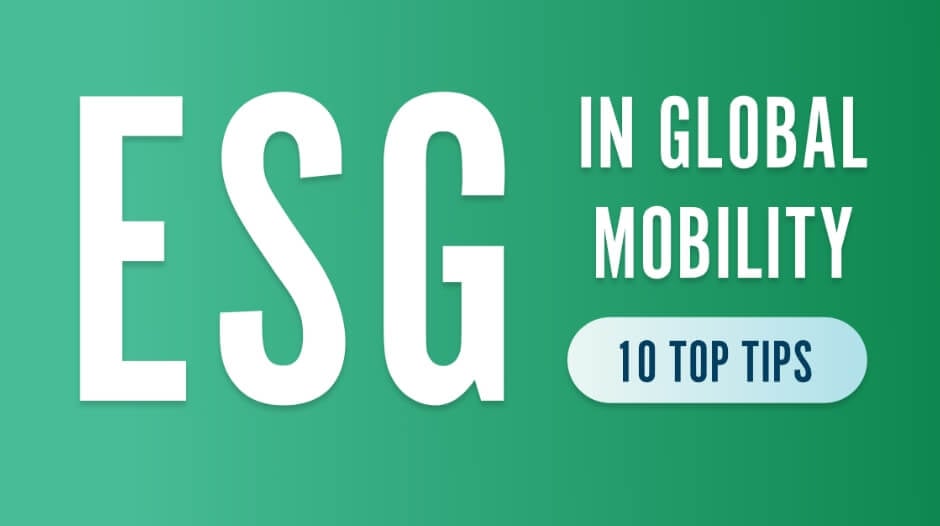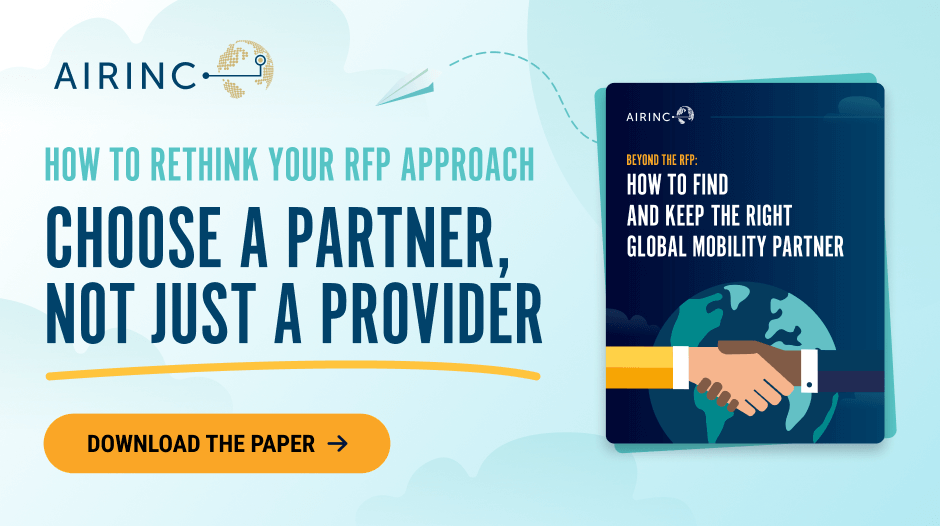ESG is firmly in the global mobility spotlight. Across all three pillars, mobility has a role to play. From reducing environmental impact, to positive social action and effective governance, there are a million and one things that Global Mobility could do to support the ESG agenda. With so much to focus on, it is easy to get bogged down in one area to the detriment of the rest. Taking a step back to look at the big picture and devising a plan of action can help to advance your ESG priorities across all three pillars.
In the final part of our mini-series of blogs, we focus on how you can offer information to make your program sustainable across all three pillars.

Offer employees information or choices that encourage sustainable practices
In our recent environmental sustainability survey, it was noted that the vast majority of assignees do not ask the mobility team about sustainable options. However, it was also noted that in most programs, there is a complete absence of information which, if made available, would help assignees to make better sustainability choices.
In a recent example, a company started sharing the CO2 footprint of home leave trips with their assignees and offered assignees the choice of trading down to less impactful travel options. Any cost savings were donated to company-sponsored ESG initiatives and employees could claim up to four additional vacation days per year to cover the additional time spent travelling if slower overland options were chosen instead of flying. Experience shows that, when employees have the information available, many will make more sustainable choices.

Offer mobility options to give international growth opportunity to all employees
Global Mobility programs offer a unique opportunity for talented employees to gain international experience that accelerates their own career. It creates role models for future talent and develops skills they can take back to their country of origin to nurture further development and growth of the people around them. Opening the scope of Global Mobility to a wider pool of employees is essential. Alternative forms of mobility will help the company to access employees who, for whatever reason, are not ideally suited to a traditional long-term assignment.
Many companies are turning to internal job marketplaces to advertise assignments and escape the ‘tap on the shoulder’ that perpetuates traditional assignment profiles. Alternative types of mobility such as short-term project assignments, virtual assignments, rotational internships, and commuting arrangements also offer a wider range of employees the chance to gain international experience and accelerate their career growth.

Monitor and report on alignment to core business and ethical values
Good governance requires robust structures, regular reviews, and continuous monitoring. This can be both at a micro level, as well as a more macro program level.
An example at the micro level is the assignment approval process. In many cases, a cost projection serves just one purpose: to gain approval for the assignment. However, from a governance perspective it is important to understand the true assignment cost. Historically, access to actual cost information has been a challenge, but tools are coming into play that allow this critical metric to be captured.
Armed with this information, Mobility teams that can monitor true costs will then exercise better governance of the program. At the macro level, many Mobility teams are being asked to monitor and report on how the program as a whole supports company initiatives — for example, in terms of diversity in the program.
For more ideas, read the full white paper here.




%20(93)%20(1).png)
%20(16).jpg)


